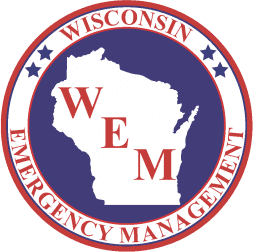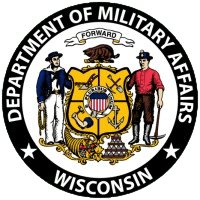WI-CAMS
The printing of WI-CAMS deliverables requires access to a system-compatible printer. However, data entry on the SalamanderLive™ platform uses many of the same data fields found in other software solutions. Oftentimes, the transition of local data to WI-CAMS requires little more than importing the adoptive agency’s data.You can learn more about joining WI-CAMS by sending an e-mail to Wisconsin Emergency Management.
To scan and account for resources, WI-CAMS uses the 02 TRACK solution, which is compatible with iOS and Android devices. 02 TRACK runs on the interTRAX® exchange system alongside the SalamanderLive™ web application. Resources can be scanned in the field using either a wireless access point or via cellular data connection. Access to the exchange server is managed through application tokens which can be granted to or revoked from the field with an administrator account in SalamanderLive™. More information on 02 TRACK can be found at Salamander.com.
A SalamanderLive™ account with an 02 TRACK token can view incident and resource data captured in the field through a web browser and the SalamanderLive™ application. Resource data can be altered using interTRAX® Command.
Resource Credentialing
The terms “credentialed” and “credentialing” mean having provided or providing, respectively, documentation that identifies personnel and authenticates and verifies the qualifications of such personnel by ensuring that such personnel possess a minimum common level of training, experience, physical and medical fitness, and capability appropriate for a particular position.
The development of a nationwide credentialing system is a fundamental component of NIMS. However, this system is fundamental doctrine and business rules, and is not a single information technology system. A national credentialing system can document minimum professional qualifications, certifications, training, and education requirements that define baseline criteria expected of emergency response professionals and volunteers for deployment as mutual aid to disasters. While such a system is meant to verify the identity and qualifications of emergency responders, it does not provide automatic access to an incident site. The credentialing system can help prevent unauthorized (i.e., self-dispatched or unqualified personnel) access to an incident site. To support this credentialing initiative, the National Integration Center (NIC) uses working groups to identify positions that should be credentialed and the minimum qualification, certification, training, and education requirements for each position. The groups represent the following disciplines:
- Incident Management
- Emergency Medical Services
- Fire Fighting and Hazardous Materials Response
- Law Enforcement
- Public Health/Medical
- Public Works
- Search & Rescue
- Animal Control/Veterinary
- Mass Care
In addition to these NIC discipline groups, the NIC is working with other organizations to assist their development of credentialing for their disciplines, such as the APCO/NENA Telecommunicator Emergency Response Taskforce (TERT) and the Citizen Corps initiative for credentialing volunteers.
Although the NIC has identified subject-matter experts for its working groups, the Center requests notification of all existing credentialing efforts, regardless of discipline. The NIC welcomes your participation into their stakeholder review group. As a stakeholder, you will receive updates concerning the working group process and be able to review and provide feedback on the draft products that are developed. If you are interested in participating as a stakeholder, please send an e-mail to: FEMA-NIMS@dhs.gov
By law, 6 U.S.C. § 320, NIMS credentialing guidelines are mandatory for each federal department and agency with responsibilities under the National Response Framework to ensure incident management personnel, emergency response providers, other personnel (including temporary personnel), and resources likely needed to respond to a natural disaster, act of terrorism, or other man-made disaster are credentialed. They are voluntary and highly encouraged for federal legislative and judicial branches, state, local, tribal, private sector partners, and non-governmental organizations.
Non-federal entities are not required to comply with the Federal Information Processing Standards 201 (FIPS-201), an open technical standard used by federal officials for uniform credentialing and access control. However, the Department of Homeland Security (DHS)/Federal Emergency Management Agency (FEMA) strongly encourages them to do so in order to leverage the federal investment in the FIPS-201 infrastructure and facilitate interoperability for personnel deployed outside their home jurisdiction.
The FEMA Administrator is responsible for ensuring the development and implementation of credentialing of emergency response providers, as specified by Title IV (Section 408) of Public Law 110-53 (6 U.S.C. § 320). Section 320 also calls on the administrator to “provide standards” and “detailed written guidance.” In addition, Public Law 110-53 (6 U.S.C. § 320) requires the FEMA Administrator to provide expertise and technical assistance.
Any person credentialed and authorized for deployment through EMAC meets the requirements as specified in the National Incident Management System (NIMS) Guideline for the Credentialing of Personnel.
State, local, and tribal jurisdictions and private sector entities are encouraged to use the Federal Chief Information Officer’s Personal Identification Verification Interoperable (PIV-I) guidance to develop credentials similar to the Federal Government’s PIV-I cards to promote consistency. For more information, please refer to the National Institute of Standards and Technology.
To support issues of “trust” between public and private-sector issued identity credentials, the Federal Government has published PIV-I. The guidance advocates a set of minimum technical and process requirements to support uniform acceptance and trust of non-federally issued identity cards or documents. If followed, the PIV-I guidance provides a supporting framework for technical interoperability with the nearly 10 million federally-credentialed uniformed and civilian employees and contractors. It supports enhanced integration and reduced costs in day-to-day operations as well as during response and incident management.
To achieve an interoperable and consistent national system, state, local and tribal governments and private sector entities are encouraged, to the maximum degree possible, to follow the Federal standard FIPS 201/Homeland Security Presidential Directive-12 and General Services Administration approved PIV-I. When this is not possible, non PIV-I organizations are asked to issue identification that matches, as closely as possible, the format of PIV-I cards.
NIMS guidance on credentialing, NIMS Guide 0002 (National Credentialing Definition and Criteria)refers to identification and qualification information. NIMS guidance on credentialing does not confer the authority or privilege to practice any profession. The receiving department, agency, or jurisdiction responsible for access control can extend privilege or authorization to response personnel if they have not been deployed through EMAC.
Each FEMA Region has a NIMS Coordinator that may be contacted here.
Mutual Aid Agreements and Assistance Agreements
The National Emergency Management Association (NEMA), in coordination with DHS/FEMA and a cross-section of emergency responders, has developed a tool to assist state and local governments in the preparation of model legislation designed to streamline the sharing of assistance and resources between communities during a disaster. The model is available for download at www.emacweb.org. Additionally, many States, such as North Carolina, have developed statewide mutual aid systems. We are also working with the International Association of Fire Chiefs (IAFC) on developing better firefighting mutual aid systems with states to make filling EMAC requests faster (Intrastate Mutual Aid Systems), as well as developing a national firefighting coordination system (Emergency Management Committee). Information on these systems can be found on the IAFC Web site.
The NIC is working with other elements of the National Preparedness Directorate and the Grants Management Directorate of FEMA on resource typing/credentialing for the resources identified in the Target Capabilities List. The NIC also is working with Citizen Corps, the Telecommunicator Emergency Response Taskforce (TERT), and the National Humane Society to develop additional national-level resource typing.
The NIC developed a policy on resource typing to define what resources require a national definition. This policy is contained in NIMS Guide 0001, National Resource Typing Criteria, dated March 27, 2008. The policy allows state, regional, and local efforts to type resources that are important locally and regionally but do not need a national consensus definition.
The NIC establishes knowledge; skills; abilities for individuals and members of teams; and the interoperability of resources through consensus definition for teams and equipment. The NIC is collaborating with the DHS Science and Technology Directorate in the development of a data model for resource management that can be incorporated into any system selected by states, to ensure the information will be interoperable when inter-jurisdictional mutual aid is needed. The data model will also incorporate existing technology standards, such as EDXL and the National Information Exchange Model, to further the interoperability of all resource management systems. The determination of how many of any given resource are needed in each community is not a function of NIMS but is a function of the FEMA Grants and Assistance Program and their work on the National Preparedness Goal (HSPD-8). While the Grants Management Directorate and National Preparedness Directorate determine needed resources, the NIC ensures consistent definition of resources so they can be ordered and will arrive fully able to perform the function requested for.
The NIC does not manage resources. The NIC facilitates resource management by providing resource typing definitions for nationally important resources. All the work we have been engaged with is in support of EMAC and for the purpose of making EMAC more efficient.
Resource Typing
Resource typing is the categorization and description of response resources that are commonly exchanged in disasters through mutual aid agreements. The National Integration Center (NIC) has developed and published over 120 resource typing definitions. The NIC is continuing resource typing work and has established new working groups for the ongoing initiative. Resource typing definitions can give emergency responders the information they need to make sure they request and receive the appropriate resources during an emergency or disaster. Ordering resources that have been typed using these definitions makes the resource request and dispatch process more accurate and efficient. In FY 2006, state, territorial, tribal, and local jurisdictions were required to inventory response assets that conform to NIMS resource typing standards.
Resource typing enhances emergency readiness and response at all levels of government through a system that allows an already overwhelmed jurisdiction to augment its response resources during an incident. Standard resource typing definitions help responders request and deploy the resources they need through the use of common terminology. They allow emergency management personnel to identify, locate, request, order, and track outside resources quickly and effectively and facilitate the movement of these resources to the jurisdiction that needs them.
Yes. Resource typing is an important part of resource management, which is one of the five components of the National Incident Management System. The only standard for resource typing is contained in Appendix B to the NIMS. However, the appendix does not provide the detailed guidance for someone to produce nationally consistent resource definitions. To better explain NIMS resource typing, the NIC published NIMS Guide 0001, National Resource Typing Criteria. The NIC is continuing to develop resource typing definitions, which are then offered for national comment.
FEMA and the National Integration Center (NIC) recently released the National Mutual Aid Glossary of Terms and Definitions and the resource typing definitions for over 120 different kinds of resources. The resources were identified by groups of federal, state, and local representatives as the most commonly requested and exchanged resources during significant disasters and emergencies. These products provide a foundation for facilitating the use of common terminology while enhancing mutual aid across the country.
Yes. Nine working groups have been formed by the National Integration Center (NIC) to develop and refine definitions for critical response assets. The working groups include Animal Health, Emergency Management, Emergency Medical Services, Fire & Hazmat, Public Health & Medical, Mass Care, Law Enforcement, Public Works, and Search and Rescue. The initiative will expand to include additional discipline groups if the need arises. Resources are being revised on an as-needed basis as errors or updates are recognized by the NIC and stakeholders. Adjustments will be made to the current 120 typed definitions as capabilities and capacities improve and additional resources will be typed as they are identified by stakeholders.

